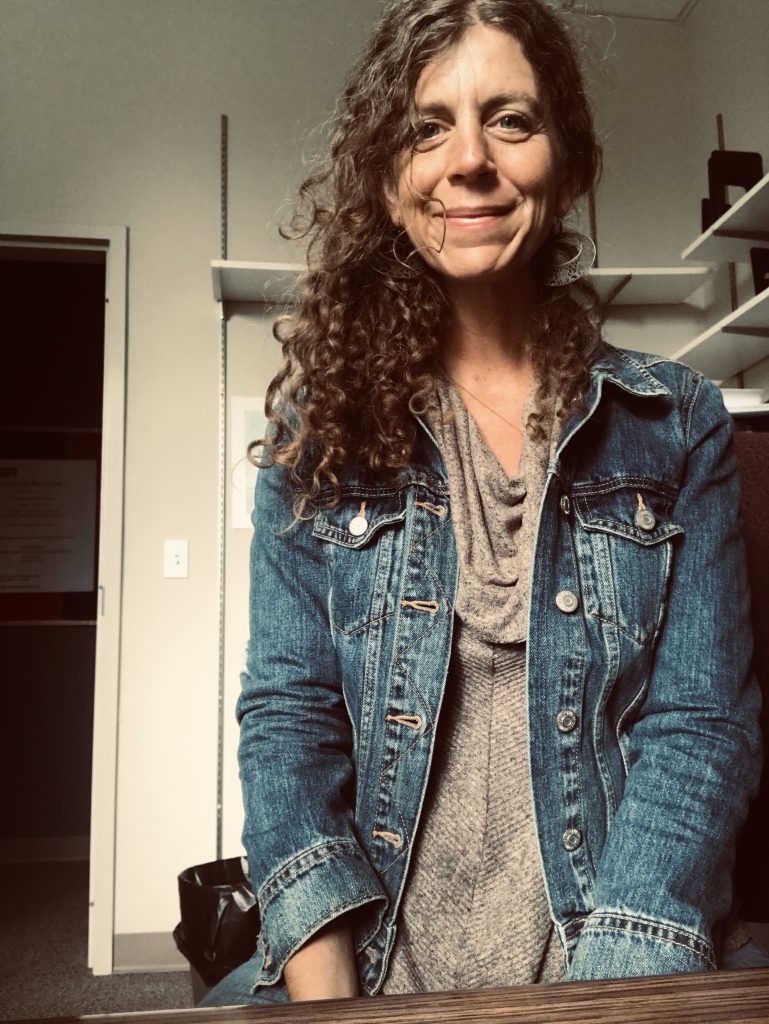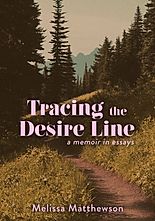 Melissa Matthewson lives in southwestern Oregon. She is the author of a collaborative chapbook, (un)learning, with Andrea Beltran from Artifact Press (2016). Her essays have been published in numerous places including DIAGRAM, Mid-American Review, Guernica, River Teeth, and Bellingham Review among other publications. Her first book of nonfiction, Tracing the Desire Line, is out now from Split Lip Press.
Melissa Matthewson lives in southwestern Oregon. She is the author of a collaborative chapbook, (un)learning, with Andrea Beltran from Artifact Press (2016). Her essays have been published in numerous places including DIAGRAM, Mid-American Review, Guernica, River Teeth, and Bellingham Review among other publications. Her first book of nonfiction, Tracing the Desire Line, is out now from Split Lip Press.
Melissa Matthewson holds a BA in Environmental Studies from UC Santa Cruz and an MS in Environmental Studies and Writing from the University of Montana, and she also holds an MFA in creative nonfiction from the Vermont College of Fine Arts.
She currently teaches at Southern Oregon University.
Tell us about your book Tracing the Desire Line? And what is hybrid nonfiction?
Tracing the Desire Line is a memoir-in-essays, 42 chapters, in which the narrator, myself, explores questions of freedom, identity, place, motherhood, non-monogamy, and marriage. It is possible to read each chapter on its own, but read together, the fragments create a whole story. There are a number of narrative layers including the exploration of non-monogamy within the context of a traditional marriage, female desire and sexuality, music, and place. It’s my first book! (Well, I hope there will be a second…). Hybrid nonfiction, to me, is the meeting place between poetry and prose—the writer uses the techniques from both genres to create exciting new texts that blur boundaries.
How do the various aspects of your work intersect—writing, teaching?
 This is an interesting question! I’ve been teaching so many different courses, so it’s intersected in electic ways over the last five years of teaching college. When I was teaching English courses, I was designing 200-level courses around topics of interest: women and autobiography, the literature of environmental justice, nonfiction writing, nature writing, and all of these classes intertwined with my own writing in that the readings inspired me and the writing and reading I was doing with students informed my own craft and art. Since I’ve been teaching Communication courses, the intersections are different, though I’ve been teaching multimedia writing, which is an entirely different type of content and in the spring, I’ll be teaching environmental journalism. I think that teaching, in general, gets me excited to write my own work because I’m often discovering new ideas alongside students.
This is an interesting question! I’ve been teaching so many different courses, so it’s intersected in electic ways over the last five years of teaching college. When I was teaching English courses, I was designing 200-level courses around topics of interest: women and autobiography, the literature of environmental justice, nonfiction writing, nature writing, and all of these classes intertwined with my own writing in that the readings inspired me and the writing and reading I was doing with students informed my own craft and art. Since I’ve been teaching Communication courses, the intersections are different, though I’ve been teaching multimedia writing, which is an entirely different type of content and in the spring, I’ll be teaching environmental journalism. I think that teaching, in general, gets me excited to write my own work because I’m often discovering new ideas alongside students.
How did you become a creative nonfiction writer? Were you always interested in writing?
I fell in love with the essay when I was at the University of Montana. I credit Robert Michael Pyle for helping me to pay attention to the world and then encouraging me to transcribe that to the page. Also, I spent a semester working with Annick Smith, a Montana writer who wrote Homestead, and I knew I wanted to write a similar book to her. It’s still one of my favorite books. It’s a memoir of her buying a piece of land in the Blackfoot Valley of Montana with her husband and sons. She’s a beautiful writer and her attention to the land inspired me to write memoir. I continued to develop my essay writing as I went on to the Vermont College of Fine Arts and many of my mentors there also inspired me to keep writing nonfiction. I’m not very good at making stuff up, though I really want to write a novel. I think I’m a confused poet. And yes, I’ve been writing forever. I still have some of the really bad poems I used to write at ten.
Who do you read? For inspiration? Craft?
Virginia Woolf. Annie Dillard. Those two are my go-to if I need to remember why I love words and language. And when I need to remember how to write again. I actually just moved all of my books out of storage and Woolf and Dillard have been hiding for many months in boxes, and I’ve freed them on to my living room bookshelf, which I think will help me as I think about a next book.
You have students who are writers. What sort of advice have you got for them?
My advice is to be determined. If you love to write, keep writing. Ignore the voices in your head telling you that you shouldn’t write. Read what you love and figure out how those writers craft stories. Don’t let anyone tell you what you should or shouldn’t write. And do the work. It really does come down to writing, and writing, then writing more, and revision. I think so much magic happens in revision. That’s my favorite part of writing: when I’ve got the ideas and the images and the play comes with finding the right rhythms and syntax. And also, to be okay with not writing. To pay attention to the things happening around you and record them if you can. And remember that all voices matter and everyone has a story to tell. We are all natural storytellers. Live. If you live, you also can write.

 Follow
Follow